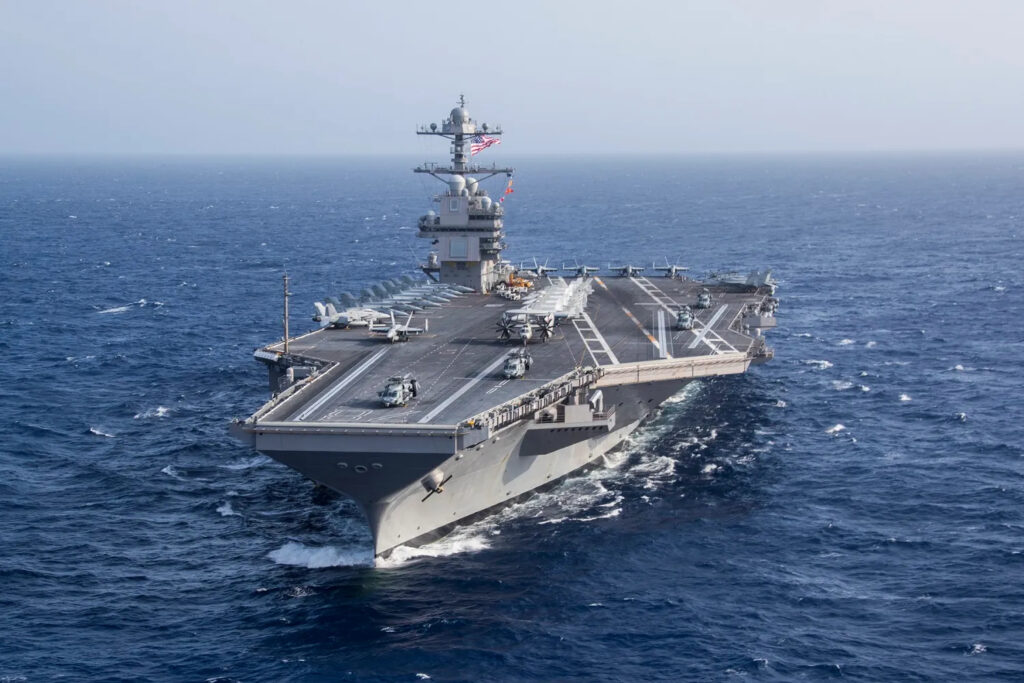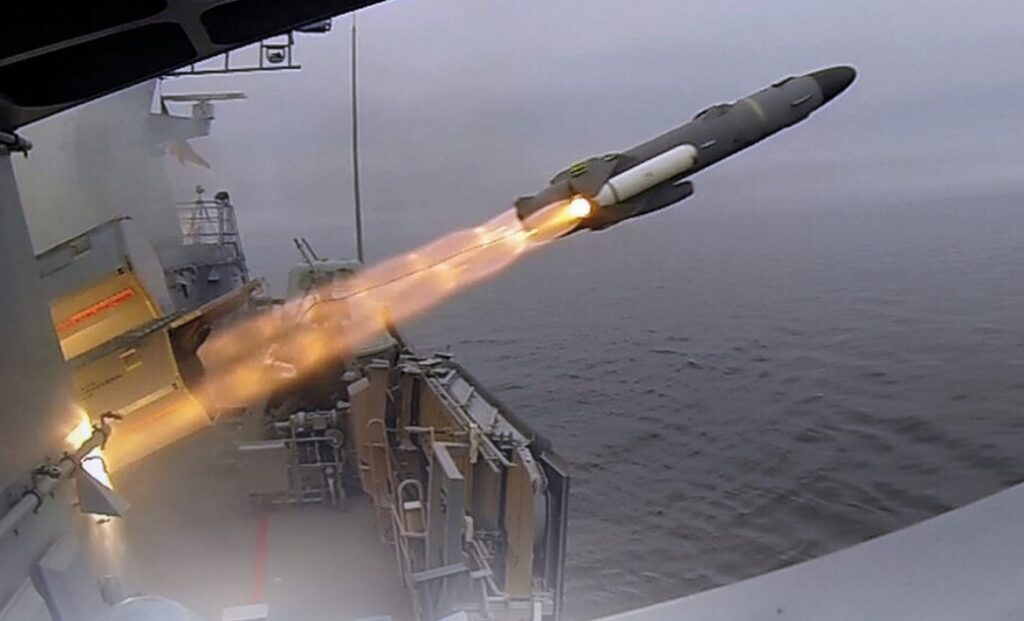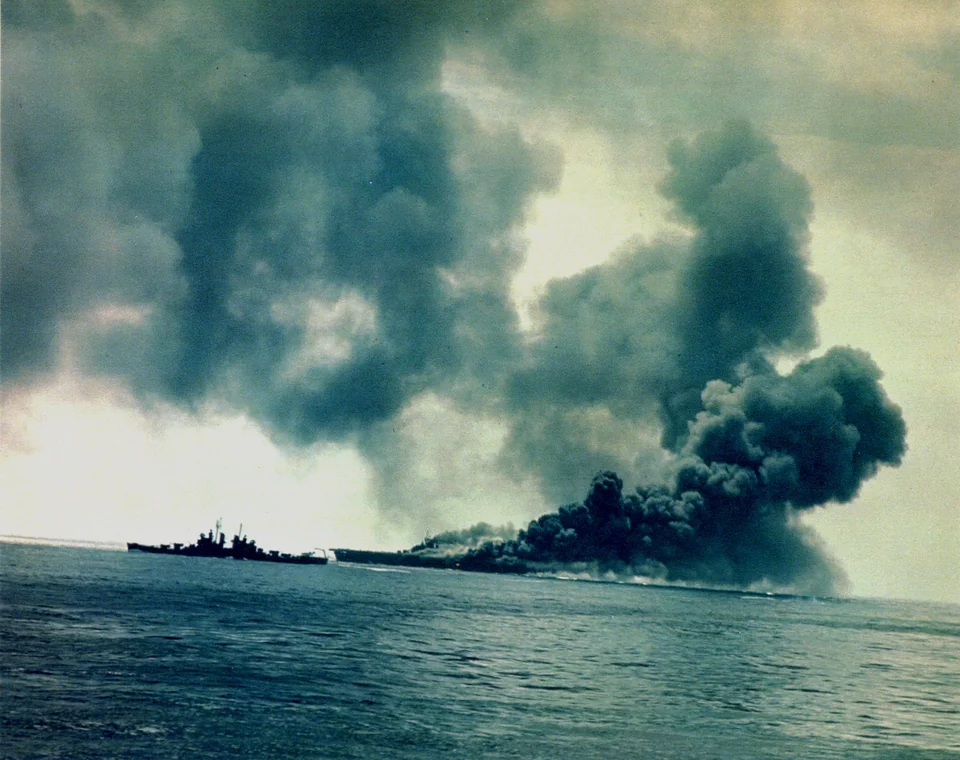While the super carrier is an awe-inspiring piece of military hardware, it’s also an extremely vulnerable one that requires tremendous amounts of federal treasure. The Navy’s reliance upon them could be a weakness in a conflict against a major power with the means to take them out, namely China.
My expertise on the U.S. Navy and modern military hardware is hardly all-encompassing, so there are many details of operations and capabilities that I can’t speak to. If you are readily supplied with facts that might confirm or contradict my arguments, please feel free to email me. I’d love to hear from you and learn more.
That said, I’m not completely without data on the subject and I am an ardent student of military history. I have a hard time countering my basic premise–the U.S. Navy is far too dependent upon an increasingly vulnerable weapons platform when it comes to conflict with a major power. A platform whose susceptibility was apparent even in its heyday of World War II when it was fielded in far greater numbers.
Carriers: Purpose and short history
Carriers have a single military purpose–extending the U.S. Navy’s tactical striking power geographically. It does this by moving airplanes within range of targets.
Prior to the missile, the airplane was the only technology capable of striking targets beyond the dozen or so miles that the largest artillery pieces were capable of hurling shells. However, aircraft require airfields to take off and land from. Various solutions for adding aircraft to the fleet were tried, such as catapult-launched float planes, but found wanting in many regards.
Soon was born the concept of the mobile floating airfield, aka, the aircraft carrier–an idea that makes perfect sense, but required a long and expensive teething process.
Note that the photo at the head of this article is a near-miss shock trial, not the actual destruction of a super carrier.

However, a full set of gnashers appeared, and carriers eventually proved so effective, that their portable air power became the major naval offensive weapon in the vast Pacific theater during the second world war. Witness the battles of Pearl Harbor, Coral Sea, Midway, Philippine sea, Okinawa and others. As you can see above, the modern descendant is a behemoth with vast capabilities.
While these mobile airfields allow the projection of tactical air power far beyond the range of the longest-legged airplanes, they have one significant drawback–they can be sunk or damaged beyond utility. The latter being “mission-killed”, in current parlance. A sinking results in not only the loss of the airfield, but all the planes on board, plus those airborne that aren’t within reach of other carriers or an airfield residing on Terra Firma.
Alas, WWII also saw the nascence of the weapon that would eventually render both carriers and airplanes vulnerable, if not obsolete, as well as redefine the parameters of long range offense…
Missiles
During the Vietnam war, the U.S.A.F learned that missiles weren’t yet a great technology for dog-fighting–a valid lesson with a time limit. This “lesson” somehow gained mind share as a weakness of missiles at large. However, ships aren’t nearly as fast or maneuverable as airplanes, and have been easy targets for missiles almost since the inception of the technology.
In any contest with missiles, a ship has no choice but to destroy or disable them all–it can’t escape. That’s no easy task due to high rate of speed at which these modern arrows travel. And anything less than a 100% kill rate still ends in disaster.
Also, today’s missiles are hardly those that were available in the Vietnam era. The computing power they rely upon has increased over a million-fold–a staggering figure. Detection and data acquisition technology have seen similar, if not quite so massive gains.

Please note, that I must rely on what I can glean from the results of international events to weigh the effectiveness of modern missilery. Judging from the results I’ve tracked, missiles have become extremely effective. Far more so than modern combat vehicles or vessels should be comfortable with.
A single Exocet missile sank the HMS Sheffield as far back as the early 1980’s. More recently the Ukrainians claim to have sunk a Russian cruiser with a missile. Those incidents aside, there’s not a ton of actions to go by due to the lack of conflicts between nations with both ships and anti-ship missiles. But the preponderance of the available evidence seems to indicate that watercraft are indeed highly vulnerable.
In fact, in general, one might gather from the combat in Ukraine, that the only truly effective defense against missiles these days is killing the operators before they can fire them. Obviously, this is not always going to be possible. Especially with an opponent with roughly the same capabilities as the U.S. Navy.
Even without hard knowledge of the defensive abilities of a carrier strike group, I might guess that even relatively low-tech missiles in sufficient numbers could wreck havoc upon a carrier. That doesn’t even factor in the new technologies we may not know how to cope with, which have a tendency to crop up warfare.
In point of fact, the vulnerability of carriers to missiles has been proven beyond a shadow of a doubt. Hardly to the point of wreaking massive operational havoc, but certainly to the point of seriously affecting doctrine. So…
Enter the Kamikaze

Make no mistake, Kamikazes were guided missiles. Human-guided missiles, primitive in design and capabilities to be sure, but missiles nonetheless. And while they resulted in a prolific waste of life in an already-decided contest, they were far more effective than the U.S. Navy with its unarmored, wooden flight decks would’ve liked.
Two Kamikaze aircraft nearly destroyed the Essex-class carrier U.S.S. Bunker Hill in World War II (shown above). Superior damage control and operational savvy saved it, but the incident cost nearly 400 sailors their lives. This happened despite radar, combat air patrols by far more capable aircraft, and effective anti-aircraft weaponry on and around the ship.
The point is, that despite the huge number of aircraft that had been nullified by these defenses, some eventually got through. The results are obvious and today those failures would be far more devastating due the smaller number of far-larger carriers the U.S. operates. I don’t envy our Navy strategists and tacticians trying to counter the threat.
Proof of concept is this rather lengthy list of ships damaged or sunk by kamikaze attack. Note that I don’t always trust Wikipedia, but it can be accurate on subjects lacking in political or social import, and there are plenty of reliable sources listed in the pages dedicated to the individual events.
More threats
I believe missiles are by far the biggest threat, as they can be employed in vast numbers relatively cheaply, even by lesser powers. Lesser powers are unlikely to attack a super carrier simply due the possible consequences of retaliation. However, a major power might not have the same fear.
Carriers are also vulnerable to submarines and aircraft. Despite a U.S. Navy carrier group having been defeated in war game by a single, non-nuclear Swedish submarine, I still think this threat might be easier to mitigate. I might be wrong.
Our as of yet, superior technology in the air might make that a tough row to hoe as well. Again, I might be wrong, though ultimately said airplane is likely to employ an anti-ship missile rather than close-range ordinance, taking us back to my estimate of the primary threat. For that matter, a submarine is likely to use an underwater missile, aka, a torpedo, or some variation thereof.
There is a possible opponent who could swamp us with numbers in both submarines and aircraft–China with its ever eager eye on Taiwan. Indeed, our ship-building capabilities are now pathetically small compared to those of the Asian giant, and even those of Korea and Japan. Make of that what you will. There are possibilities of allying with the latter, though we’d do well to increase our own capacity, or at least better utilize it.
Whatever the threat, the basic issue is that a carrier’s defense can likely be overwhelmed by sheer weight of numbers and likely by superior technology or tactics. I’ve avoided discussing the nuclear elephant in the room, as in any conflict involving that type of weapon, the loss of a carrier would likely be a relatively minor incident.
While the issue is vulnerability, the major problem is how the loss of our carriers might cripple our overall capabilities. I.e., we might lose without them.
High costs suck resources
According to the best sources I could locate, the latest super carrier, the U.S.S. Gerald R. Ford, cost just over 13 billion to construct and outfit. It also costs over a billion dollars to run every year. And as far as I was able to discover, that figure doesn’t include the construction and operation of the numerous support ships in the carrier strike group used to defend and service this hyper-valuable asset.
That makes the 1 billion dollars to construct and 140 million per year operating costs of an Arleigh Burke destroyer seem cheap by comparison, though even that is a pretty distressing sum to most folks.
Sadly, (and in a slight digression), the Navy’s latest littoral (coastal) combat ships proved an unmitigated disaster in terms of quality, capabilities, and performance. That they cost far more than planned, started breaking down, and the crews were too small to effectively implement damage control in combat didn’t help either.
In my opinion, the Navy still badly needs a greater number of more affordable vessels that can wield the latest technologies. This not only causes an enemy headaches trying to track them all, it avoids the takes-too-long-to-build, all-your-eggs-in-one-basket, disaster-in-the-making that some might consider a 100,000 ton super carrier. Even a greater number of smaller carriers operating short takeoff and landing (STOL) F-35B’s would lessen the risk, or at least distribute it.
In another aside, and in a not entirely valid (apologies to Robert Montgomery and John Wayne) example of a vessel punching above its weight is the PT Boat. A more valid comparison might be destroyers and destroyer escorts, though all the above, as well as submarines, were less effective than they might’ve been due to the tragedy that was the Mark 14 torpedo. If you’d like to depress yourself with the MK 14’s tale of poor design, inadequate testing, red tape, bureaucratic buffoonery, and ego that likely cost the lives of thousands of American sailors and soldiers, watch this and this.
If I knew more about current military technologies, I’d delve into the specifics of an effective low cost ship. As it is, I’ll stand on a general principle and await enlightenment by those with more expertise. Such an animal may not be possible, though I suspect it just might–and that it would involve missilery of some type.
Reduce the number, transfer the resources
The carrier, and now the super carrier, has proven more than useful on many levels–both militarily and politically. They impress the target audience, and can deliver massive amounts of offense given their survival on the battlefield.
I don’t argue against their existence, just their efficacy and survivability in a major conflict against an equal or superior force, as well as the percentage of the navy budget they require.
Again, I can’t help but think that they should be fielded in smaller numbers and/or as smaller types dispersed more widely. The money saved might be used in building smaller, cheaper, but still offensively potent vessels that would force the “What happens if I don’t get them all?” conundrum on the attacker. LMK what you think.
Note that my father was a career Marine Corps aviator (’41 through ’67) and as many will know, the USMC is a department of the Navy. In fact, he enlisted in the Navy, learned to fly and dive bomb in the Navy, then subsequently transferred to the USMC for a bump in rank when the corps needed more pilots. He flew OS2U’s, SBDs, SB2C’s, ADs, F9Fs and finally C130s. Two DFCs and a host of other medals.
Because of this I have deep regard for the organization I question in this article. In fact, that regard is the impetus.